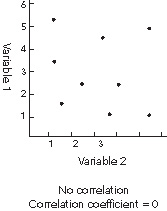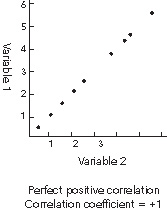Example: The more years of education a person receives, the
higher his or her yearly income is.
A negative correlation (–) means that when one variable
increases, the other one decreases.
Example: The more hours a high school student works during
the week, the fewer A’s he or she gets in
class.
The higher the correlation coefficient, the stronger the correlation.
A +0.9 or a –0.9 indicates a very strong correlation; a +0.1 or a –0.1
indicates a very weak correlation. A correlation of 0 means that no
relationship exists between two variables.



Common correlational research methods include case studies, surveys,
naturalistic observation, and laboratory observation.
Case Studies
In a case study, a researcher studies a subject in depth.
The researcher collects data about the subject through interviews, direct
observation, psychological testing, or examination of documents and records
about the subject.